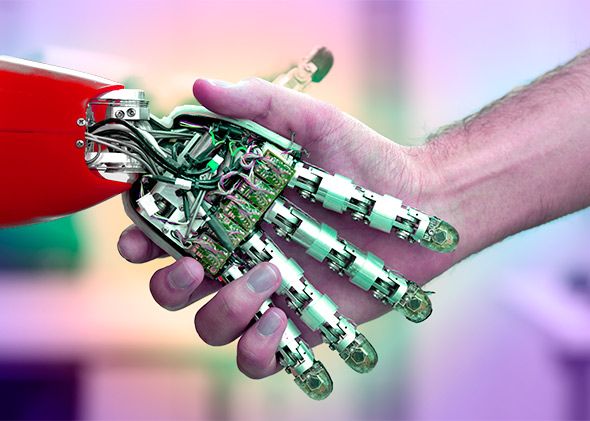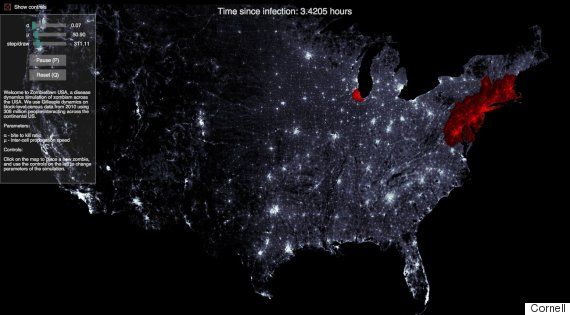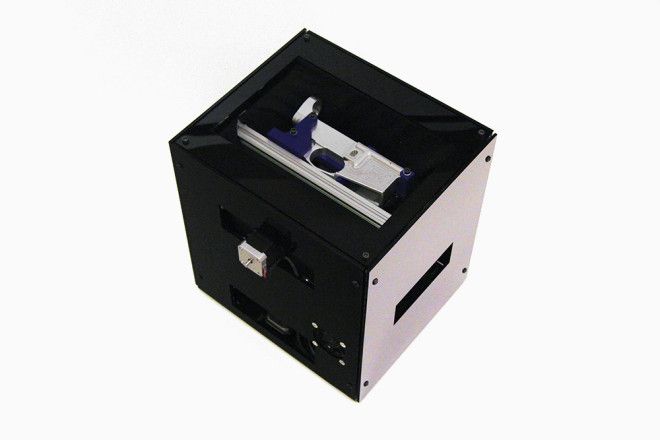![]()
![]()
![]()
Clean Disruption of Energy and Transportation:
How Silicon Valley Will Make Oil, Nuclear, Natural Gas, Coal, Electric Utilities and Conventional Cars Obsolete by 2030
By Tony Seba
Book review by Jose Cordeiro
All the armies in the world are not as powerful as an idea whose time has come.
Victor Hugo, 1854
If you find a prediction reasonable, than it is probably wrong, because the future is not reasonable; it is fantastic!
Arthur C. Clarke, 1964
Thirty years from now there will be a huge amount of oil — and no buyers. Oil will be left in the ground. The Stone Age came to an end, not because we had a lack of stones, and the Oil Age will come to an end not because we have a lack of oil.
Sheik Ahmed Yamani, 2000
Most long-range forecasts of what is technically feasible in future time periods dramatically underestimate the power of future developments because they are based on what I call the “intuitive linear” view of history rather than the “historical exponential” view.
Ray Kurzweil, 2005
Tony Seba has been working, teaching and researching about energy issues for years. Since last decade, he has been making energy forecasts which might have looked unreasonable then, but that have already become reality this decade. Now he forecasts that by 2030 all energy generation will be solar (and wind), and all new cars will be autonomous (self-driving) and electric vehicles. Since only about 1% of the global energy production is solar (and wind) today, some might think that the 100% target by 2030 seems impossible. Others might ponder that it is even more incredible to go today from less than 1% electric vehicles and basically 0% self-driving cars (just to give two very rough numbers about the current situation) to 100% electric and 100% autonomous for all the new vehicle production by 2030.
If those predictions were not enough, he also forecasts that the current oil, nuclear, natural gas, coal, biofuels, electric utilities and conventional car industries will be totally “obliterated” through the convergence of solar (and wind) with electric and autonomous vehicles by 2030. Will Tony Seba’s predictions for 2030 be right again? I sincerely hope so, for the benefit of humanity!
Clean Disruption
Clean Disruption of Energy and Transportation is a really disruptive book. More than disruptive, it is a revolutionary book that envisions the evolution of the energy and transportation industries during the next two decades. The economic value of those two sectors is truly immense, the energy industry represents about US$ 8 trillion and the transportation industry about US$ 4 trillion, every year. Thus, we are talking about disrupting US$ 12 trillion, which is a huge number, almost as big as the economy of China, the European Union or the United States.
In his previous book, Solar Trillions, Tony Seba already considered the rapid, even exponential, growth of solar energy. His 2010 forecasts have been surprisingly accurate, particularly since organizations like the International Energy Agency (IEA) and the US Department of Energy (DOE) Energy Information Administration (EIA) have been consistently wrong, always underestimating the growth of the solar industry. While the IEA and EIA have basically used linear projections, Tony Seba has considered exponential increases in production and exponential decreases in costs.
Tony Seba
Tony Seba has had a distinguished career as a Silicon Valley entrepreneur and executive. He got his B.Sc. degree in Computer Science and Engineering from the Massachusetts Institute of Technology (MIT), where we studied together, and later he received his MBA from Stanford University. He was an early employee in Cisco Systems, and he later cofounded PrintNation.com, where he received several awards. Currently, he is a lecturer at Stanford University, startup mentor, private investor and corporate advisor. His leadership has been recognized in publications like BusinessWeek, his articles have appeared in Forbes, and has written three best-selling books. Tony Seba has been a keynote speaker from Abu Dhabi to Hong Kong, from Auckland to Seoul.
On his new book, Tony Seba describes very well why solar energy is related much more to the new digital industries of Silicon Valley than to the old fossil fuel industries. SolarCity is an example of the new energy companies, while ExxonMobil is an example of the old energy dinosaurs. Similarly, he describes an electric and self-driving car as a computer on wheels, and he explains how far ahead the new cars are from the traditional vehicles manufactured in Detroit, Germany and Japan. Google and Tesla are pushing forward with electric and self-driving cars, while GM and Toyota, for example, seem to have a hard time following these new trends.
Exponential Growth
Exponential growth is the main driver behind the growth of the solar industry, and exponential growth is also behind the growth of the electric and self-driving cars. Even if today there is only 1% of solar energy capacity, and less than 1% of new cars are electric vehicles, it is just seven doublings away before reaching 100%. Both industries seem to be doubling about every two years, more or less, and so there will be 2% in two more years, 4% in four years, 8% in six years, 16% in eight years, 32% in ten years, 64% in twelve years, and 100% in fourteen years, or less. Obviously, it depends on the continuous growth of such industries until market saturation, but the historical trends are very clear. And self-driving cars, which are not yet commercialized, have the potential to grow even faster thanks to network effects. Therefore, thinking exponentially, it is not surprising to move from 1% to 100% in fourteen years if the doubling time is just two years, which has been very close to reality until now. Think of Moore’s Law for solar energy, actually called Swanson’s Law in honor of the Stanford professor who founded SunPower, and also Moore’s Law for electric and self-driving cars, i.e. computers on wheels.
Indeed, a “solar energy tsunami” is fast approaching and it will completely obliterate the fossil fuel companies and the old electric utilities. In parallel, another “electric and self-driving car tsunami” will also disrupt the traditional car companies that do not adapt to the fast new realities. Emerging companies with new Silicon Valley models will completely disrupt the conventional energy and transportation sectors. What is even better, this disruption will be clean, and it will actually improve the human condition. For years, for decades, energy and transportation were two of the dirtiest industries in the world. In the future, they will be cleaner, much cleaner.
How much will it cost?
Is it really possible to transition from the current Oil Age to the future Solar Age? According to the famous Sheik Ahmed Yamani, the answer is certainly affirmative. But will it cost more than the existing status quo? Let’s consider the facts!
According to the World Energy Investment Outlook published by the IEA in 2014, the energy industry will require $48 trillion investments from 2015 to 2035. That huge amount will roughly be distributed as $23 trillion in fossil fuels, $10 trillion in power generation (including only $6 trillion for renewables), $8 trillion in energy efficiency, and $7 trillion in transmission and distribution. On top of that, half a trillion dollars are spent yearly on subsidies for fossil fuels, about $550 billion in 2013. Obviously, the IEA favors fossil fuels since the agency was created by the OECD in 1974 following the 1973 oil crisis to guarantee the oil needs of the industrialized countries. Just like the US DOE was originally created in 1977 as a reaction to the 1973 oil crisis. Thus, both institutions consider mostly fossil fuels in their projections, with much less than 10% solar energy by 2035. However, this linear thinking does not capture the reality of solar capacity growing exponentially, and its costs decreasing exponentially.
Solar costs have been decreasing exponentially from almost $100/W in the 1970s. Today, total costs of solar installations vary from $3/W to $1/W, depending on altitude and longitude, including cities and rural areas, and size, including utility-scale, commercial and residential sites. Continuing with the exponential decrease of costs, combined with the exponential increase of production, it is foreseeable that in the next few years it will cost less than $1/W to install solar power anywhere, including storage costs.
The total power consumed by humanity today is about 15 TW, and this number might increase very little during the next few years, since over half of all the energy produced today is wasted. The worst industry is the transportation sector, where close to 80% of the energy is wasted. Thanks to big improvements in energy efficiency, like it has happened in the last few years, and the great energy savings thanks to electric and self-driving cars. Total power consumption might even remain constant or decline slightly.
Combining the total power consumption of 15 TW and $1/W, it gives $15 trillion in investments to transform the energy matrix from fossil fuels to solar energy, including storage. Even considering a small increase in power consumption, and low capacity factors, the total amount might be $30 trillion, or even $45 trillion, considering three times the production capacity of 15 TW. Therefore, the numbers given by the IEA to sustain the Oil Age are an insult to those who want a cleaner world, and with cheaper energy.
The “Enernet”: clean energy and transportation for all
My friend Robert Metcalf, former MIT professor and inventor of Ethernet, popularized the idea of an Energy Internet or “Enernet”. This Enernet or Energy Network will allow us to connect the whole world and to increase, not reduce, our energy consumption. With the Enernet, energy and power will become abundant and basically free, just like information and bandwidth are today thanks to the Internet. Storage considerations are also important, but new batteries and other advanced technologies will make the Enernet more resilient and create positive network effects. This intelligent Enernet will also help power the new transportation system based on electric and self-driving cars. Humanity will more from
According to Metcalfe, the Enernet will bring fundamental changes in the way we produce and consume energy, from generation to transmission, storage and final utilization. The Enernet should really create a smart energy grid with distributed resources, efficient systems, high redundancy and high storage capacity. The Enernet should also help the transition to clean energy and renewable sources, with new players and entrepreneurs taking the place of traditional “big oil” and utilities, and old monolithic producers giving more control to energy prosumers (producers and consumers). Finally, we will continue the transition from expensive energy to cheap energy in a world where energy will be recognized as an abundant resource.
Global companies like Apple, Facebook, Google, IBM, IKEA, Walmart, among many others, have publicly announced that they want to power all their operations with renewable energy. Additionally, retailers like Walmart also announced that they will install electric car chargers in their stores, so that clients can charge their vehicles for free, just like the Tesla Superchargers, also for free. Why for free? Because electricity is much cheaper than oil, and it will only get cheaper with more and more solar power, at lower and lower installation costs.
Clean Disruption shows the path for abundant and cheap energy for everybody, with economic and efficient transportation on-demand. Poor people around the world will leapfrog the fossil fuel and utility dinosaurs and move directly to intelligent distributed energy systems, just like the poor moved from no phones to mobile phones. In fact, many of those mobile phones are charged today by solar panels in many rural areas. This Clean Disruption will be better for you, better for me, better for humanity, and better for the environment.
José Cordeiro, MBA, PhD
(http://cordeiro.org)
Visiting Research Fellow, IDE – JETRO, Japan
(http://www.ide.go.jp)
Director, Venezuela Node, The Millennium Project
(http://Millennium-Project.org)
Adjunct Professor, Moscow Institute of Physics and Technology, Russia
(http://mipt.ru)
Founding Faculty, Singularity University, NASA Research Park, Silicon Valley, California
(http://SingularityU.org)




